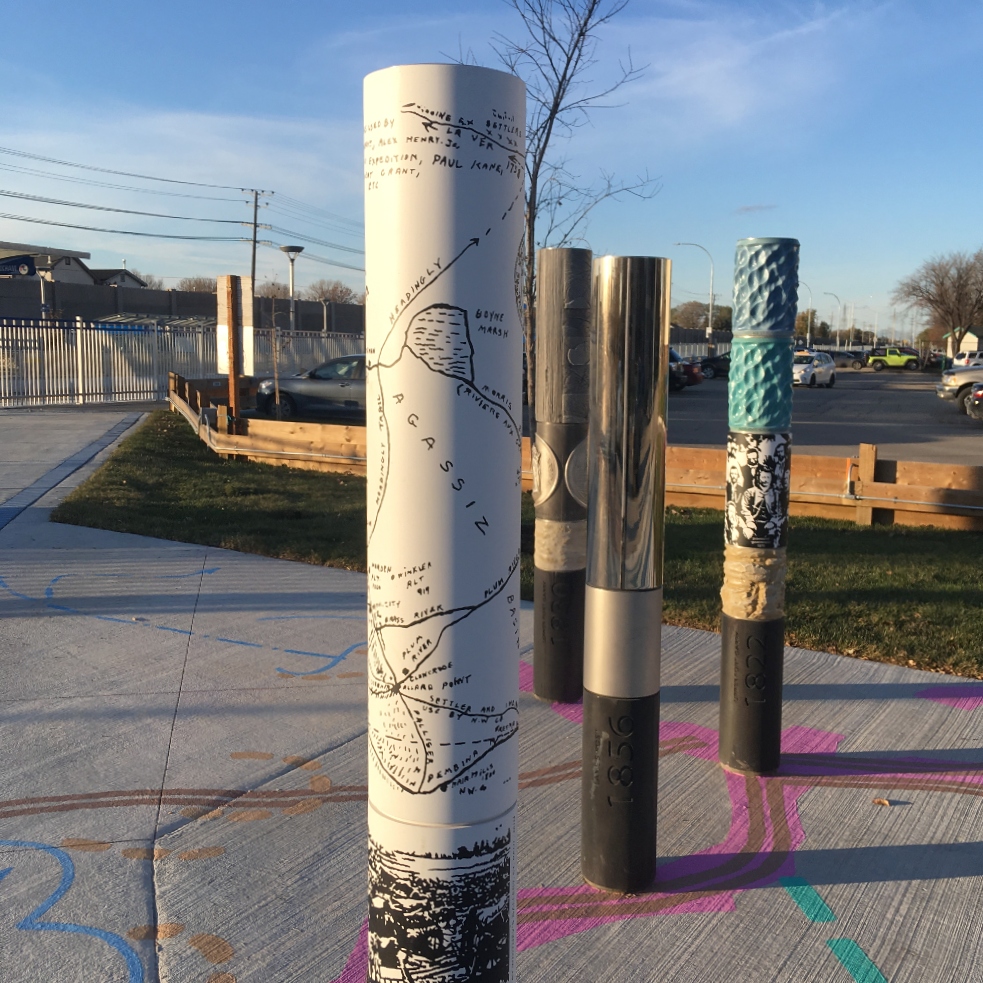When Métis artist and architect Tiffany Shaw-Collinge was commissioned to design an artwork for the Markham bus station in Winnipeg, she wanted to use the stop to showcase Métis land rights. She reached out to the president of the Métis Nation of Alberta, Audrey Poitras, who knew exactly who Shaw-Collinge needed to talk to.
She suggested Shaw-Collinge reach out to Frank Tough, an historical geographer in the University of Alberta's Faculty of Native Studies. Tough leads the Métis Archival Project (MAP) Research Lab, which, for more than 20 years, has conducted research on Métis history and land rights.
"Always in the back of our minds while we do our research is connecting a person today with historical records of the past. So for us this [art project] was a novel way of doing that," Tough said.
Shaw-Collinge received permission to use the glass walls of the bus stop to showcase scrip records-the system by which the federal government offered land allotments or money to Métis people for their land rights-and did a community-wide call asking interested Métis people to submit their family scrip records for inclusion.
The records she received, however, were disappointing.
"If you're Métis you can go and look for your family name on the Library and Archives website, but the results are just low-quality replications, and the site is not easy to navigate," Shaw-Collinge said.
She went to the provincial archives to scan records in high resolution, but found this to be too expensive.
"It would have cost me thousands of dollars to do it properly," she said, "So then I reached back to Frank. I didn't realize what a goldmine [the MAP Lab] was."
Over its 20-year history, the U of A's MAP Lab has digitized thousands of scrip records into high-resolution, high-quality images.
"This is the approach we've been taking since 1993, to make these documents accessible," said Tough.
To enhance online access, the MAP Lab worked with the Métis National Council to create a database of archival scrip documents that relaunched in 2019. It was the easy access to these documents through that database that facilitated Shaw-Collinge's art piece.
"What we did was match up some of the names that she had with our records, and provided not just the applications, but other related documents as well," said Tough.
"When I talked with Frank, he helped me frame the whole work. He said scrip is just one part. If you want to talk about Métis-specific land rights, you have to talk about land use and occupancy," said Shaw-Collinge, who added she thinks of Tough and the MAP Lab as collaborators on the work due to their large contribution.
Tough showed Shaw-Collinge a map from 1870 that depicted how the area around the Red River, now known as Winnipeg, was used by Métis people: where they would go for sugaring (maple syrup), fishing, duck hunting and berry-picking, and the river cart trails used for buffalo hunts.
"It shows not only how they lived along the Red River, but how they moved around the land for resources that sustained their unique way of life. I love this imagery because it talks about Métis people specifically," said Shaw-Collinge.
Shaw-Collinge integrated the map into her work, replicating it into the concrete sidewalk of the bus stop. She also created five sculptural markers, like obelisks, to represent the five trading posts indicated on the historic map. Each marker shows images and information related to the history of each fort, including Louis Riel's 1870 provisional government, formed at Upper Fort Garry, and Pembina Post, which was known as an assembling point for a large number of buffalo hunts.
The quality of the documents the MAP Lab provided for Shaw-Collinge makes the historical feel of the art piece more immediate to the people at the bus stop who view it, said Christina Williamson, a PhD candidate at Carleton University and a research associate in the lab.
"This bus stop allows the average person to see these historical documents as almost a primary source. I think sometimes people think that history occurred in black and white, this just feels more tangible," said Williamson.
Shaw-Collinge and Tough share the hope that incorporating this artwork into an everyday space like a bus stop increases awareness of the unique culture and history of the Métis.
